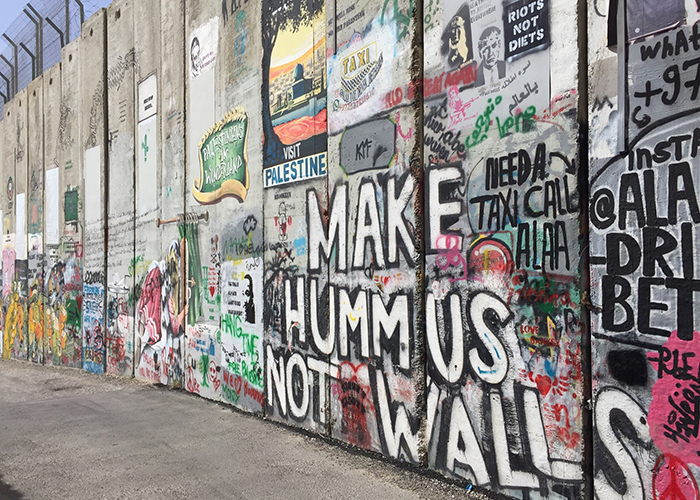 Previous Day |
Jerusalem → Ramallah → Bethlehem → Jerusalem 86.7 mi (139.6 km) |
 Next Day |
Boker tov, l’kulam!
Today I got up early and spent some time in the garden of Magas House to prepare for another long day of adventures! My itinerary was going to take me beyond a very controversial border wall into the West Bank, part of the State of Palestine!
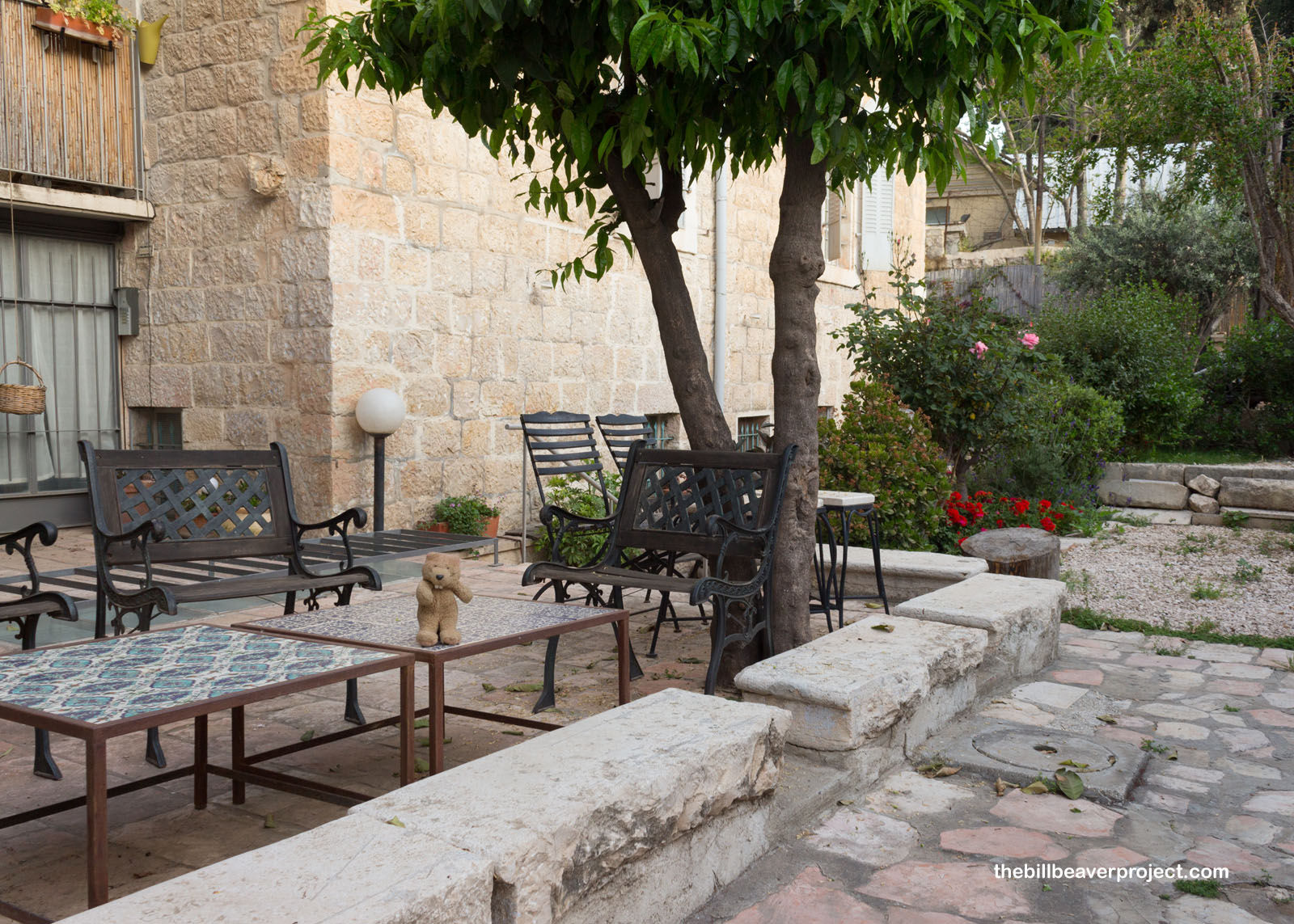 |
To get there, I signed up with Abraham Tours, headquartered a short walk away in Davidka Square, and a small group of us headed for the heavily secured border. As we passed the line of anti-tank guns and picked up our guide, Karim, who, as a Palestinian outside of Jerusalem, is not permitted to enter Israel, I decided I should change my headwear to a different kind of skullcap called a taqiyah, which will better fit with the Muslim and Christian majority of the West Bank!
Our van motored east, back to where I entered Israel just yesterday, until we arrived at our first stop, the Qasr Al-Yahud Baptismal Site on the Jordan River. This site is important to lots of pilgrims, because it’s believed to be where the ancient Israelites first entered the Promised Land, where the prophet Elijah ascended to Heaven, and where John the Baptist did his signature work on Jesus of Nazareth! This whole site was inaccessible between 1967 and 1994 because of conflicts with Jordan, but today, it’s monitored by the Israel Nature and Parks Authority and draws lots of pilgrims to be baptized in the muddy waters of the River Jordan!
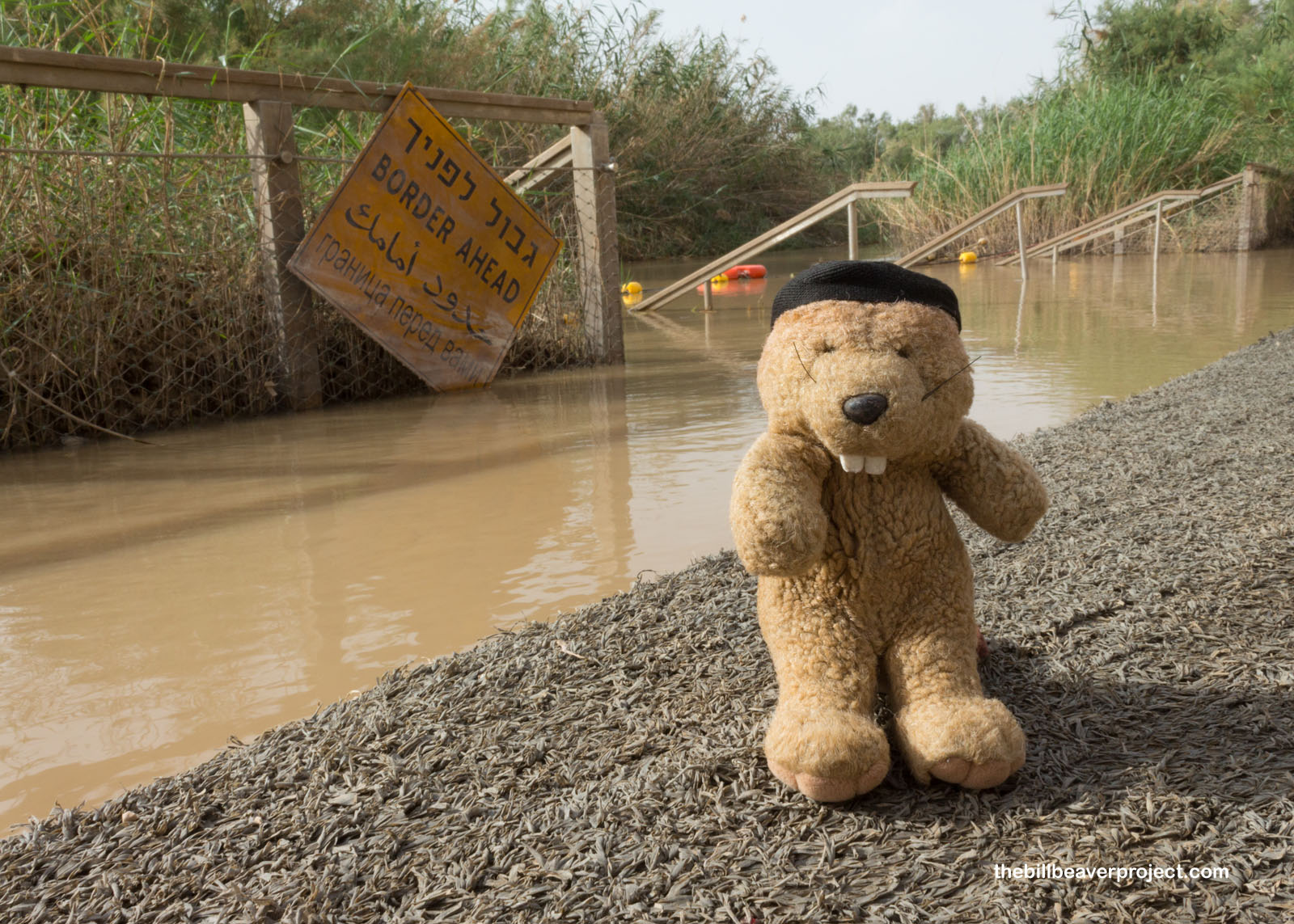 |
These are not the only miraculous waters of the area! Less than seven miles away was the famous city of Jericho, oldest and lowest city on Earth, where the prophet Elisha was said to have miraculously added salt to already salty spring water in order to purify it! Today, the spring is still flowing, but Karim joked that the miracle had expired and advised us not to drink from it. There was a special faucet reserved for drinking here, and he made a point of letting us know that Israel owned 80% of all water rights in the West Bank, which made it harder for local residents to get the water they needed.
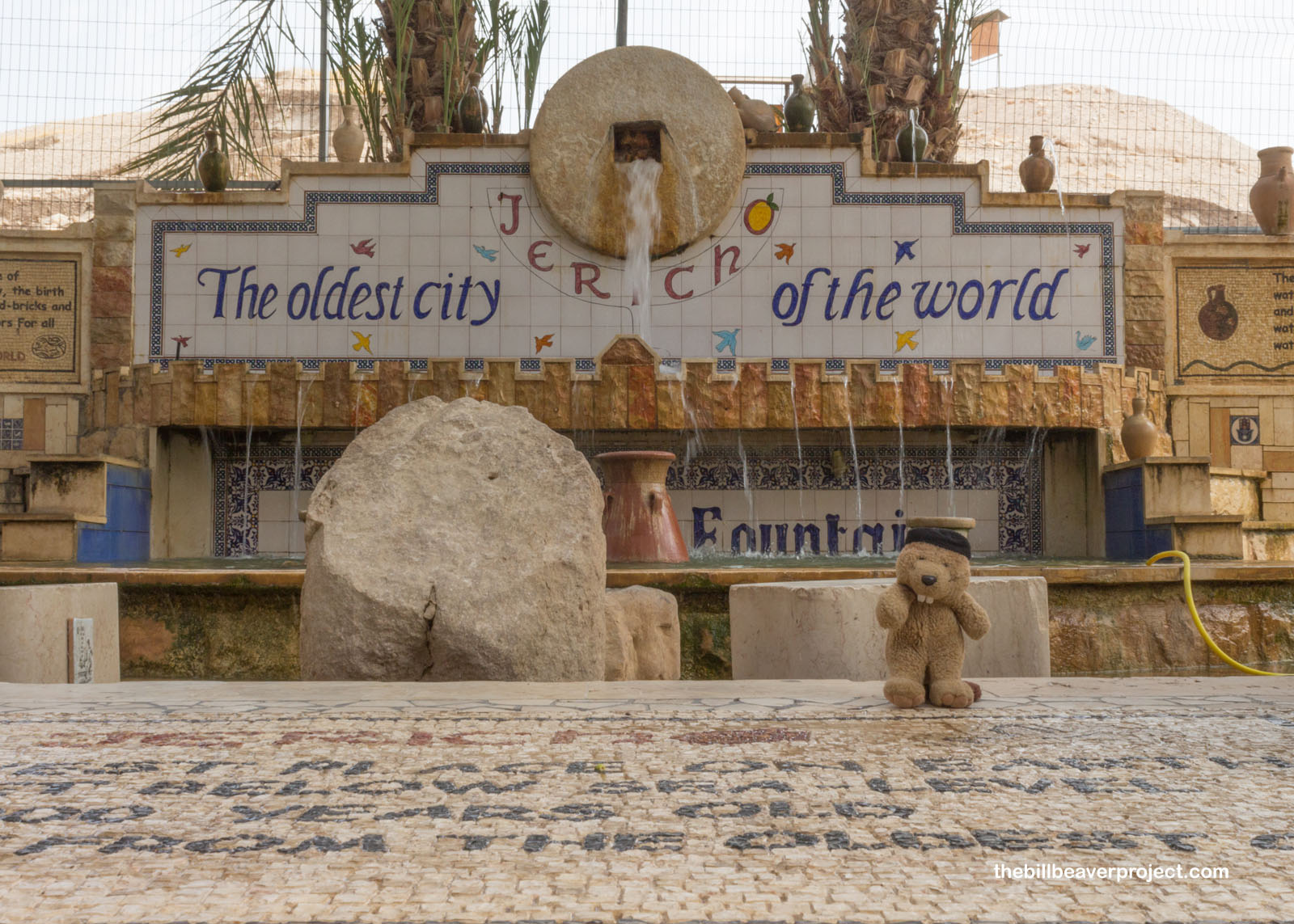 |
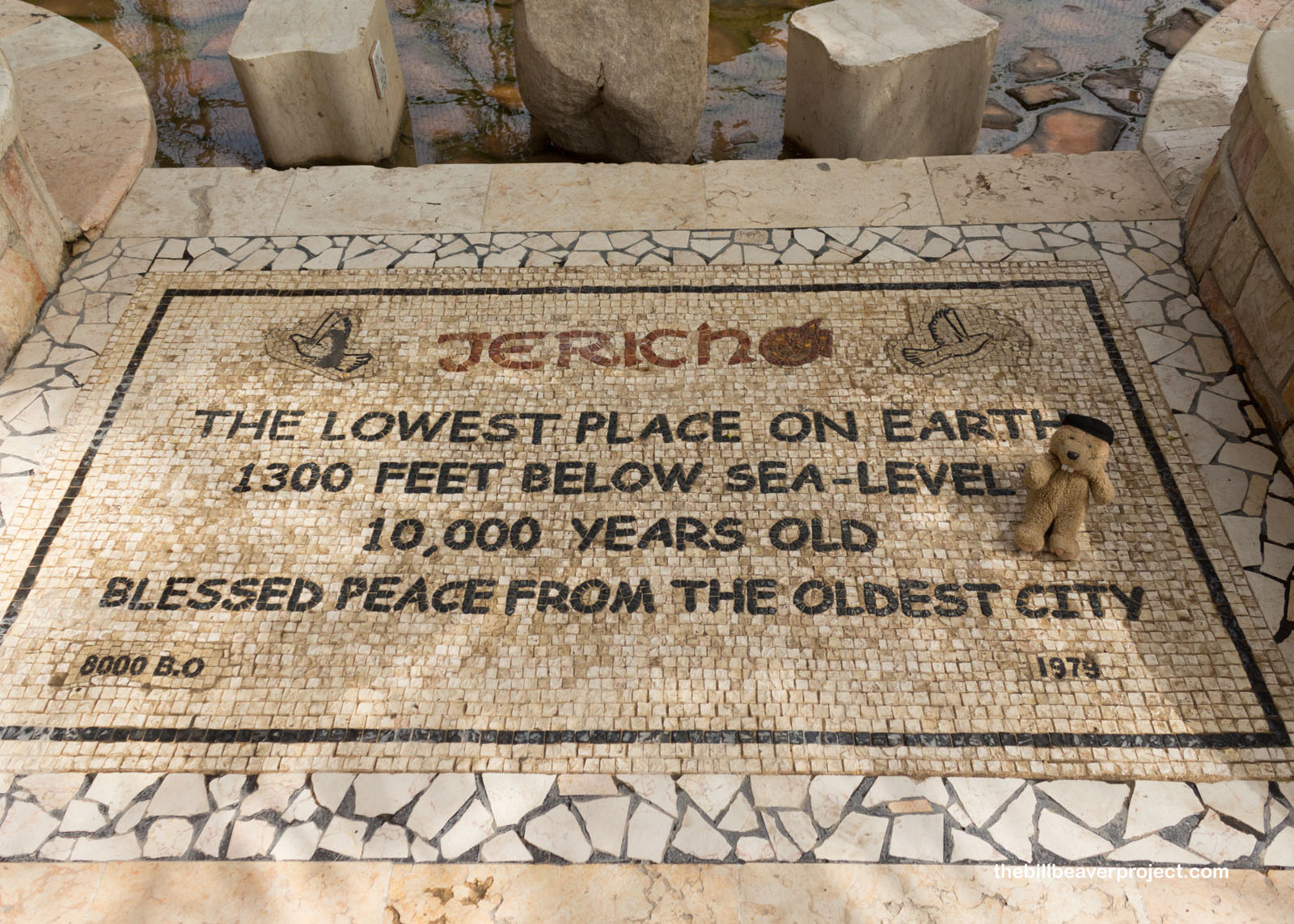 |
A trio of cable cars whizzed over our heads on their way to the top of the mountain where folks believe the Devil tempted Jesus in the desert, but we got handed off to a ground-based tour guide to wander the ruins of this ancient city. Jericho has been built, destroyed, and rebuilt 23 times in its known 11,000-year occupation! Springs like the one at the entrance made this an ideal spot for Stone Age Natufians to settle!
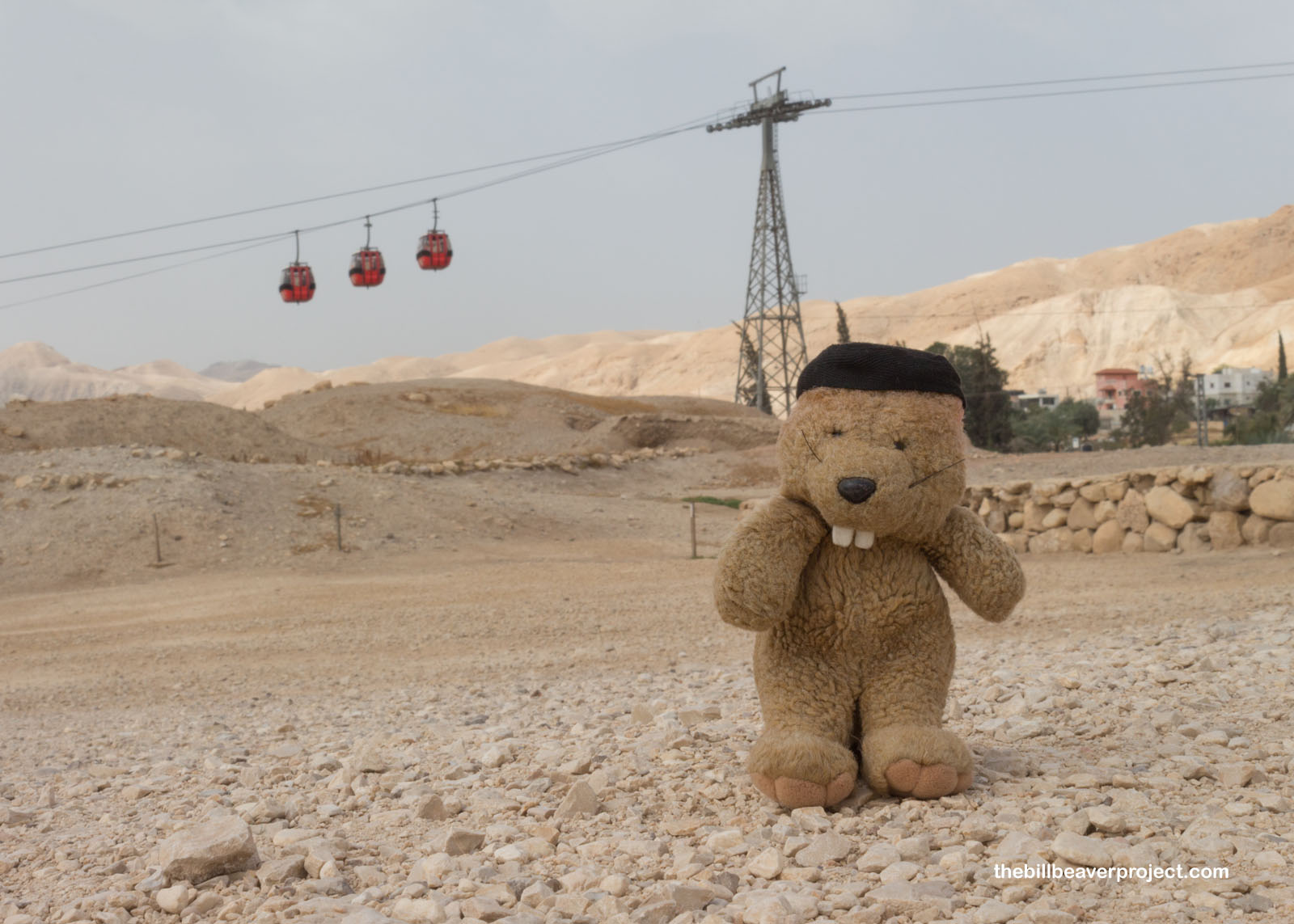 |
Jericho is most famous for the seemingly impenetrable walls from its fourth construction. Here, tradition says the prophet Joshua blew on an instrument called a shofar and sent the walls tumbling down! Indeed, we watched a group of Orthodox rabbis, closely guarded by Israeli military personnel, blowing shofars of their own over the ancient walls!
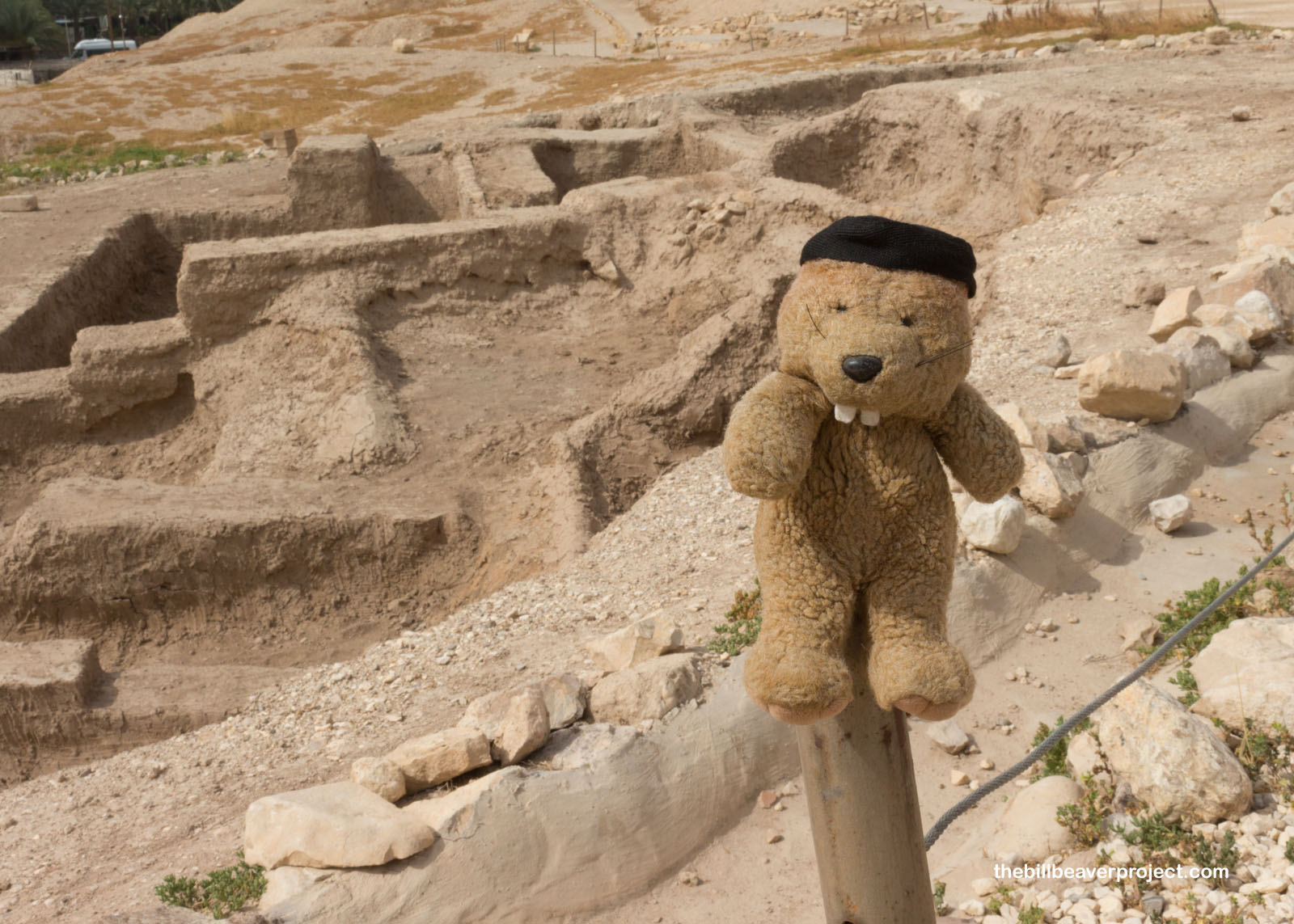 |
Our guide told us more about the archaeology of the area, pointing out the ruins of a watchtower, which may be the oldest building in the world! Back in the 1950s, he said, an archaeologist named Kathleen Kenyon dug up a chronology problem. Traditionally, the miraculous fall of Jericho’s walls happened around 1407 BC, but when Dame Kathleen ran radiocarbon dating of some charcoal preserved in the destruction layer, she found that the walls had fallen in 1550 BC, 150 years before Joshua was supposed to have arrived!
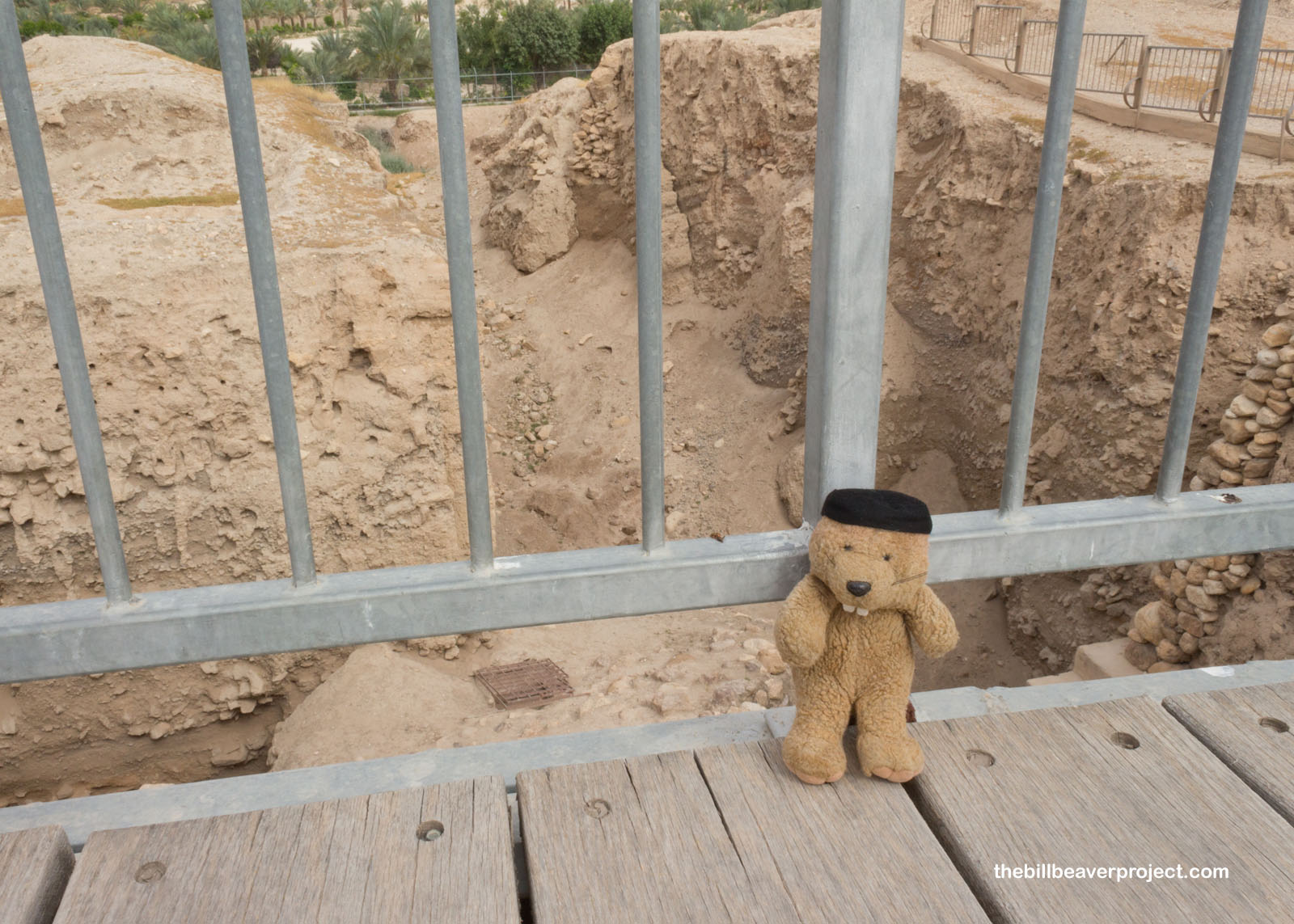 |
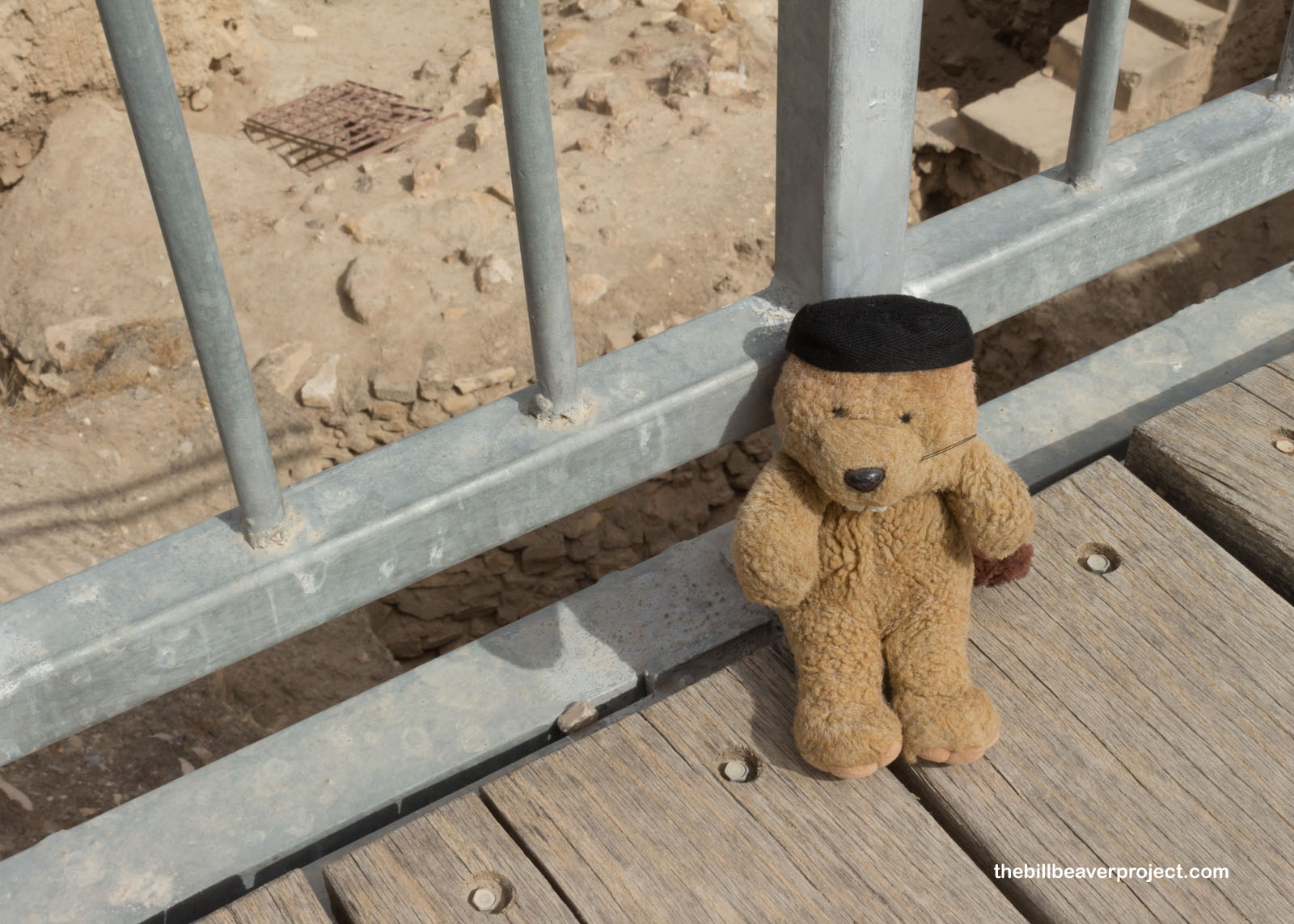 |
Today, these archaeological ruins are known as the Tell es-Sultan, or Sultan’s Mound, and the spring known as Ain es-Sultan, or Sultan’s Spring! In addition to housing the oldest fortifications in the world, the excavated city of Jericho has revealed some of the earliest examples of urban planning and ancestor worship! Each layer has its own unique composition of construction materials and its own remnants of crafts, which tell a complex story!
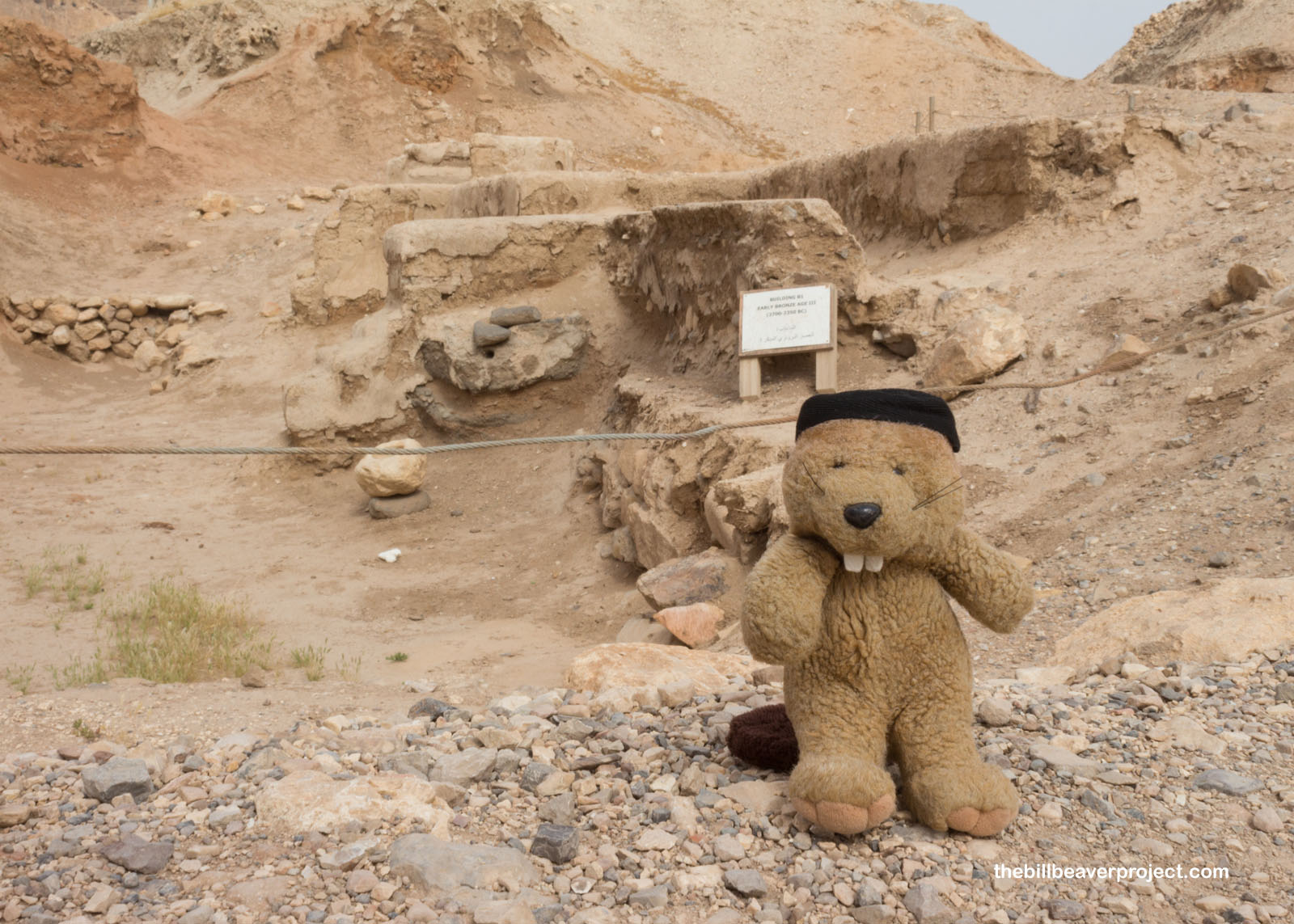 |
Today, this site is still being excavated through an Italian-Palestinian partnership, and with twenty-three layers of history, who knows what more discoveries are yet to be made?!
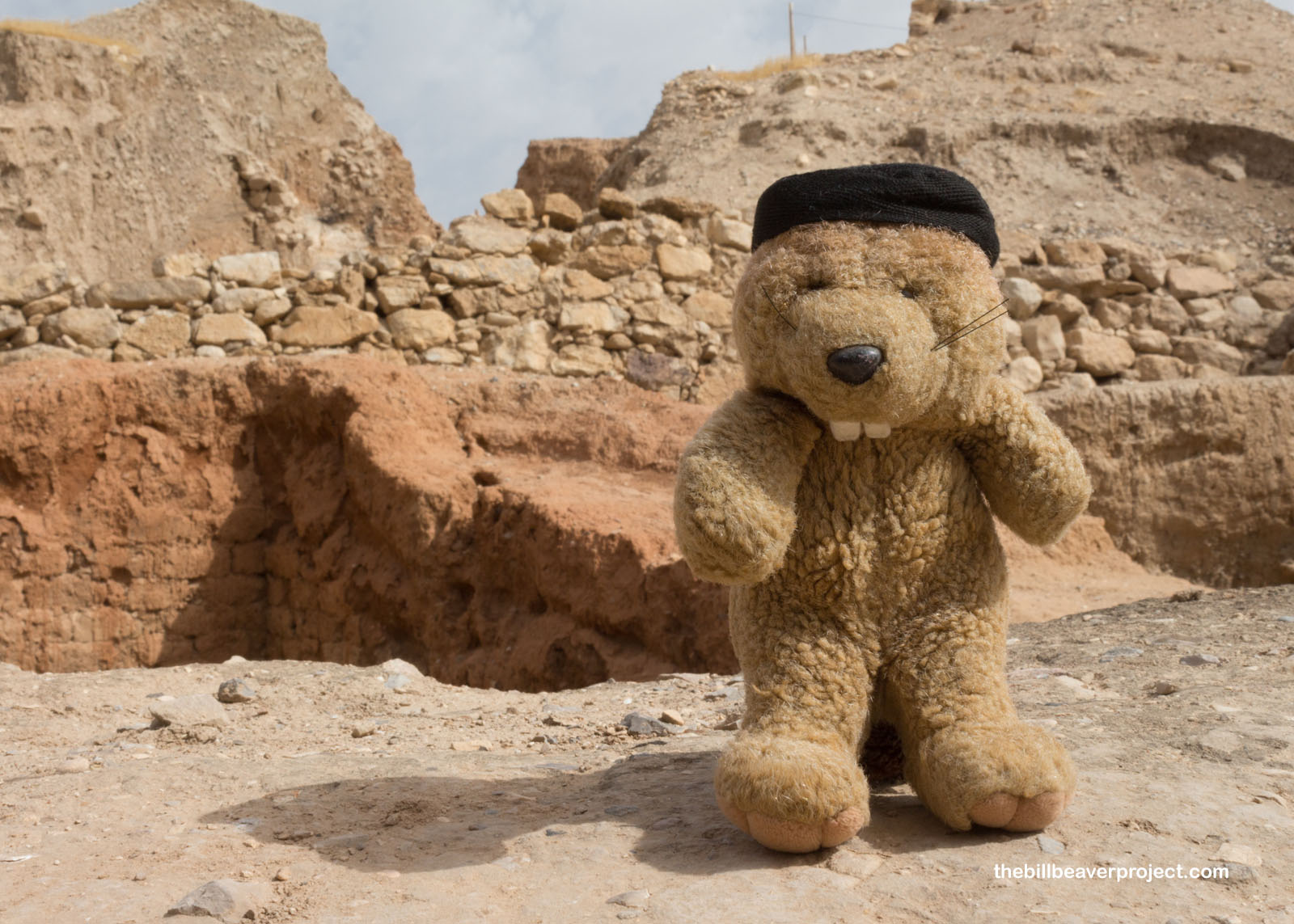 |
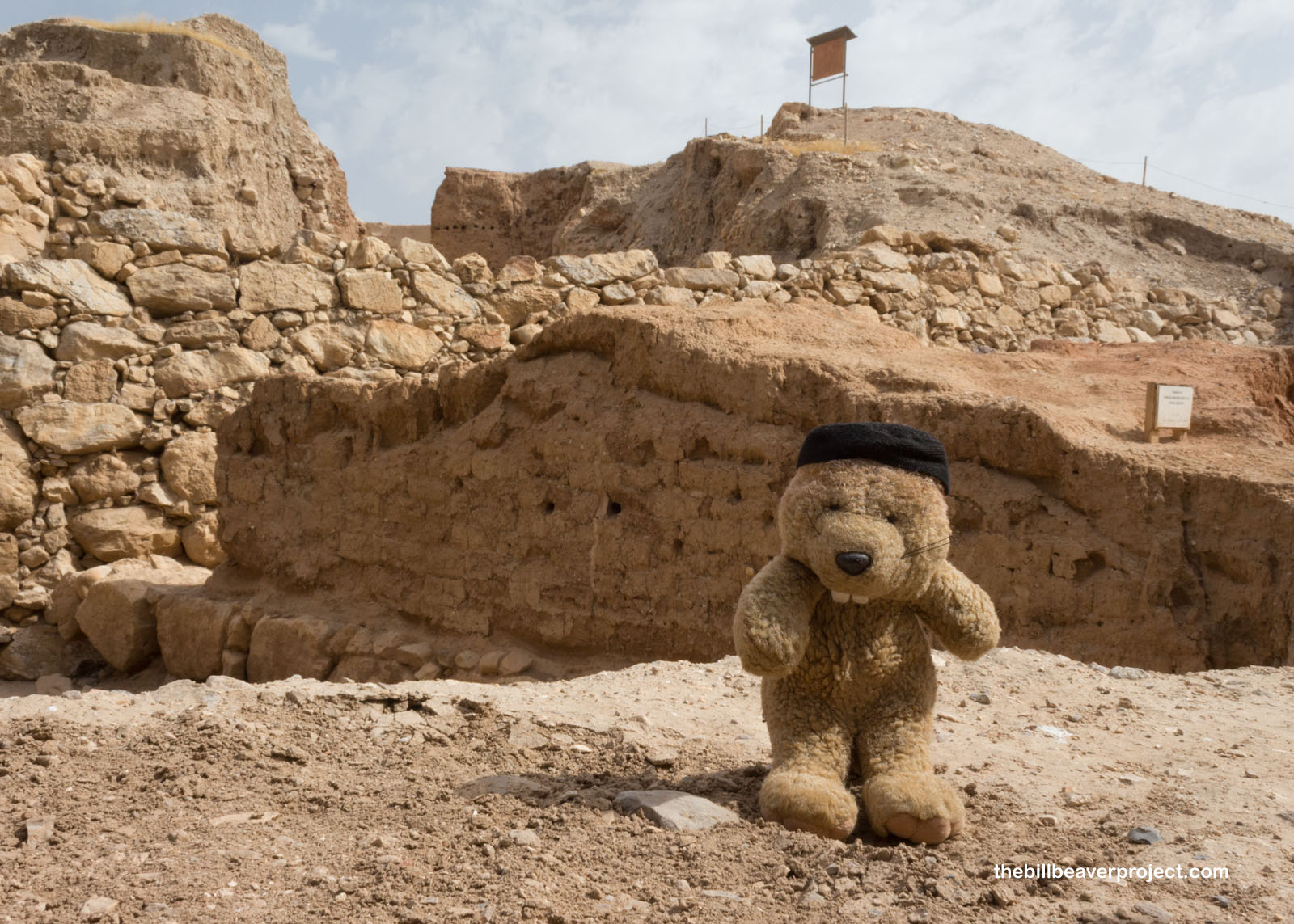 |
After some token camel photos outside the park, we piled back on the bus with bottles full of “miracle water” and headed west to the de facto capital of Palestine: Ramallah! Here, we paused at the tomb of Yasser Arafat, who founded the Fatah Party and, after fighting for a “two state approach” to liberate Palestine, became first president of the Palestinian National Authority in 1994, staying in power until his death in 2004!
As the political center of Palestine, Ramallah tends to be linked with the history of violence between Palestine and Israel, which keeps a lot of folks from visiting. Yet, as with so many places around the world, Ramallah is full of regular folks just trying to make a living. We saw lots of them in the shops and markets, where Karim made sure to have us sample some local apples and peaches!
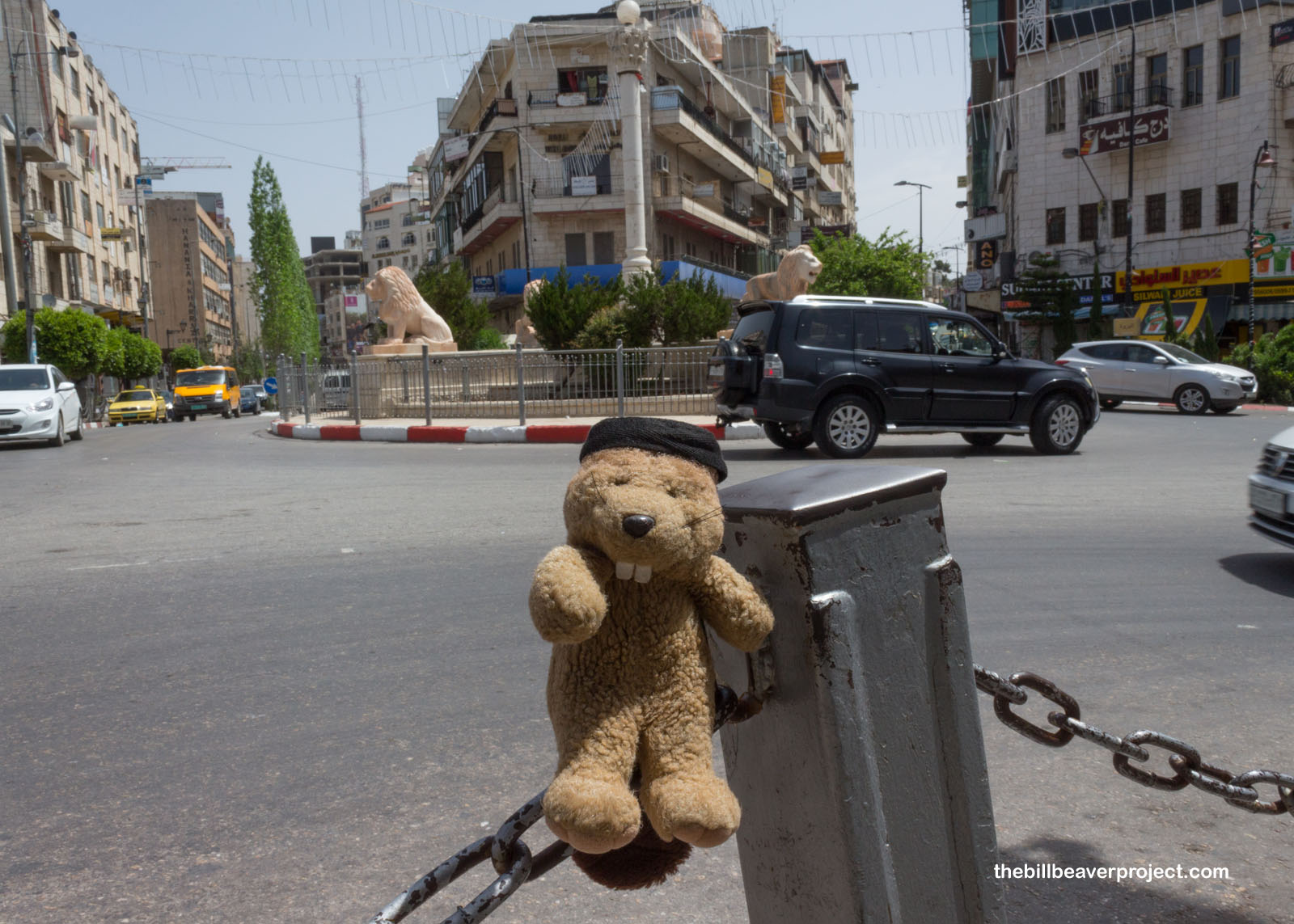 |
We paused at Al-Saa’a—Clock Tower—Square, one of Ramallah’s main meeting points. It’s also known as Yasser Arafat Square because at its center stands a tall monument depicting a boy raising a Palestinian flag. It’s meant to symbolize Yasser Arafat’s dream of spreading Palestinian autonomy across Israel. Karim just called it the Palestinian Times Square, because like New York’s version, it’s bustling with people, advertisements, and yellow taxis!
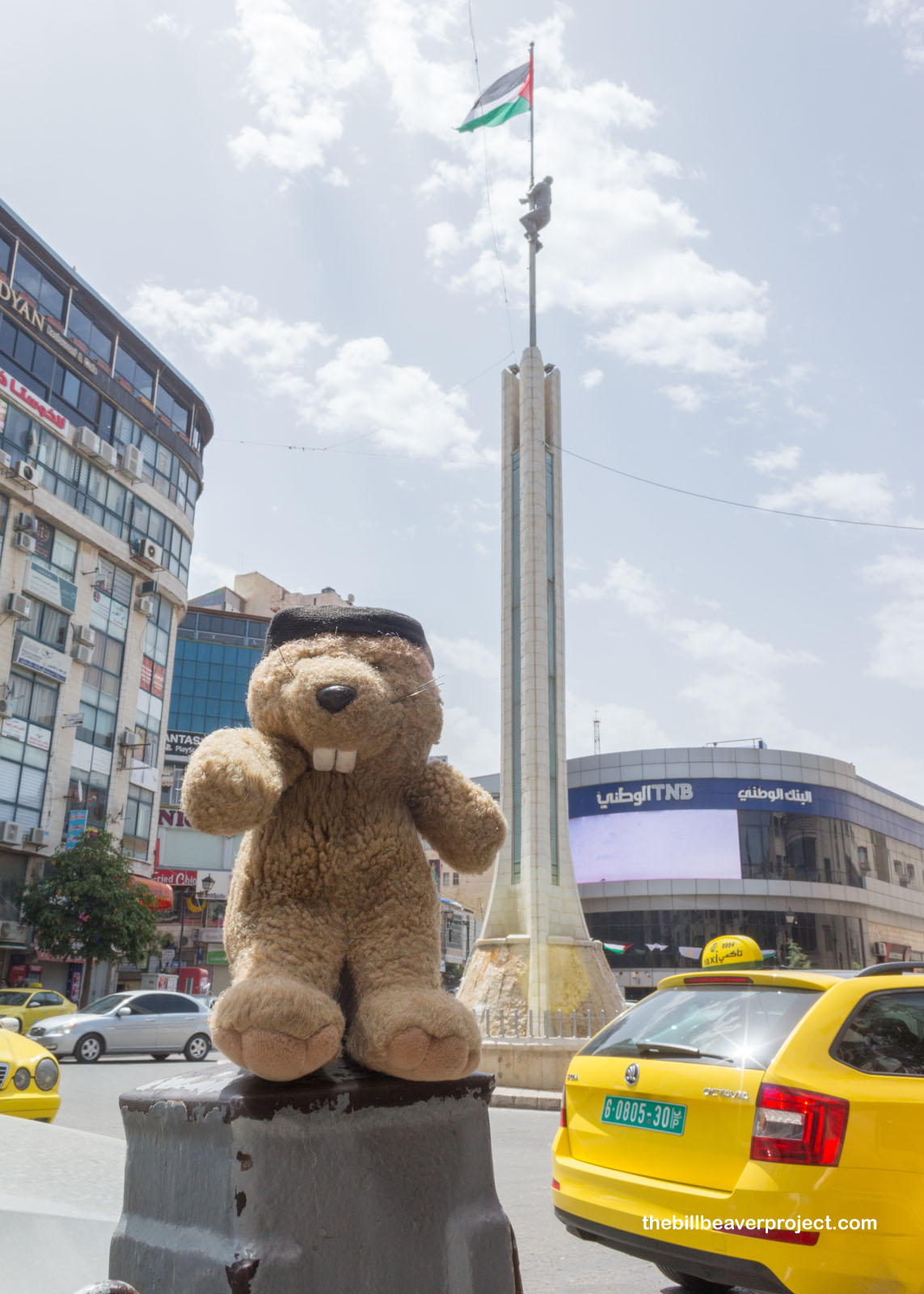 |
We stopped at a bakery for some sweets to tide us over for another drive south to a grand feast in Bethlehem. There were so many goodies to tuck into the freshest hot pita that we all waddled out feeling fully stuffed!
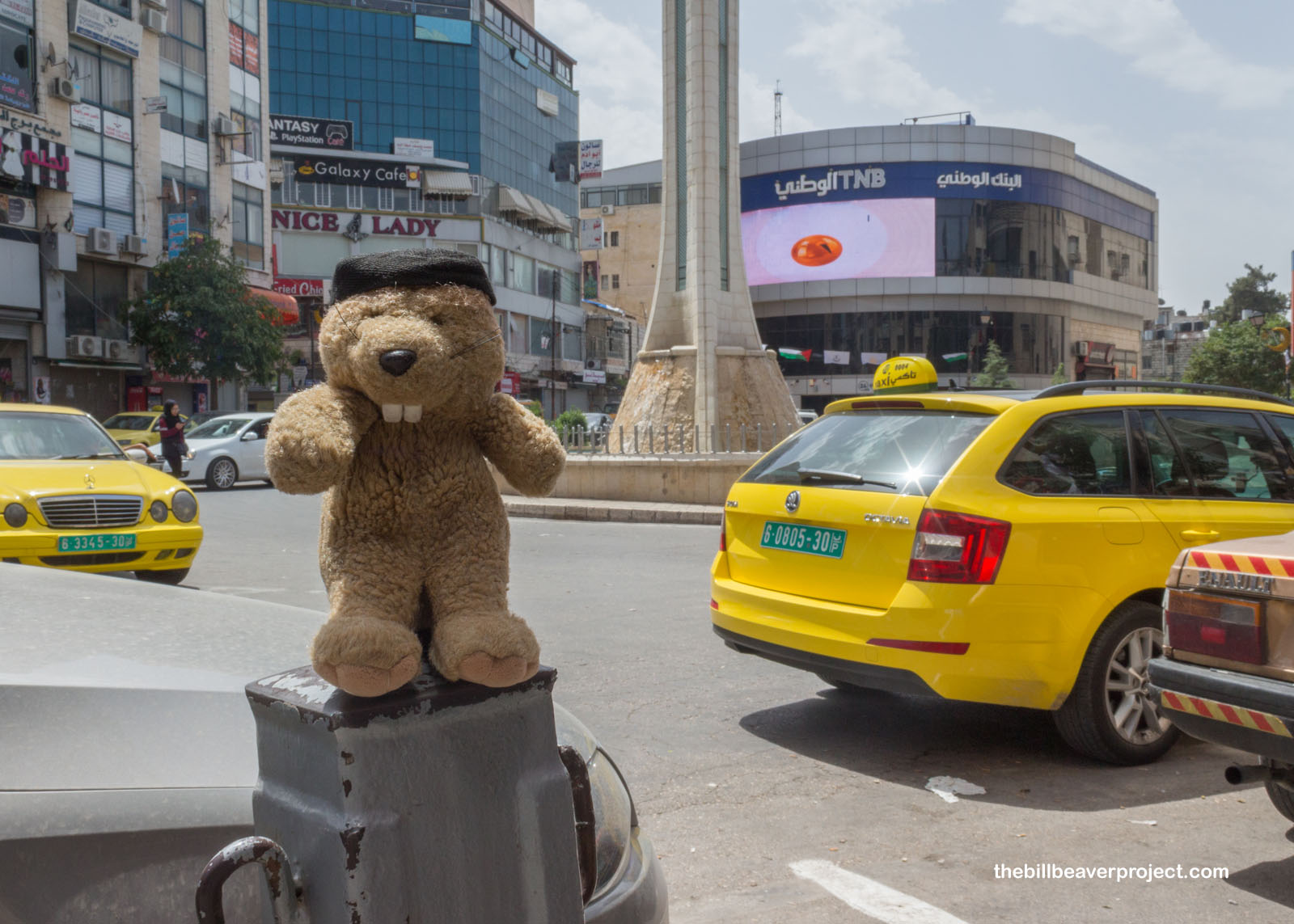 |
Bethlehem would be the last stop on our West Bank tour, and historically an important one! The Church of the Nativity is the second holiest church in all of Christianity because it’s where it’s believed that Jesus was born!
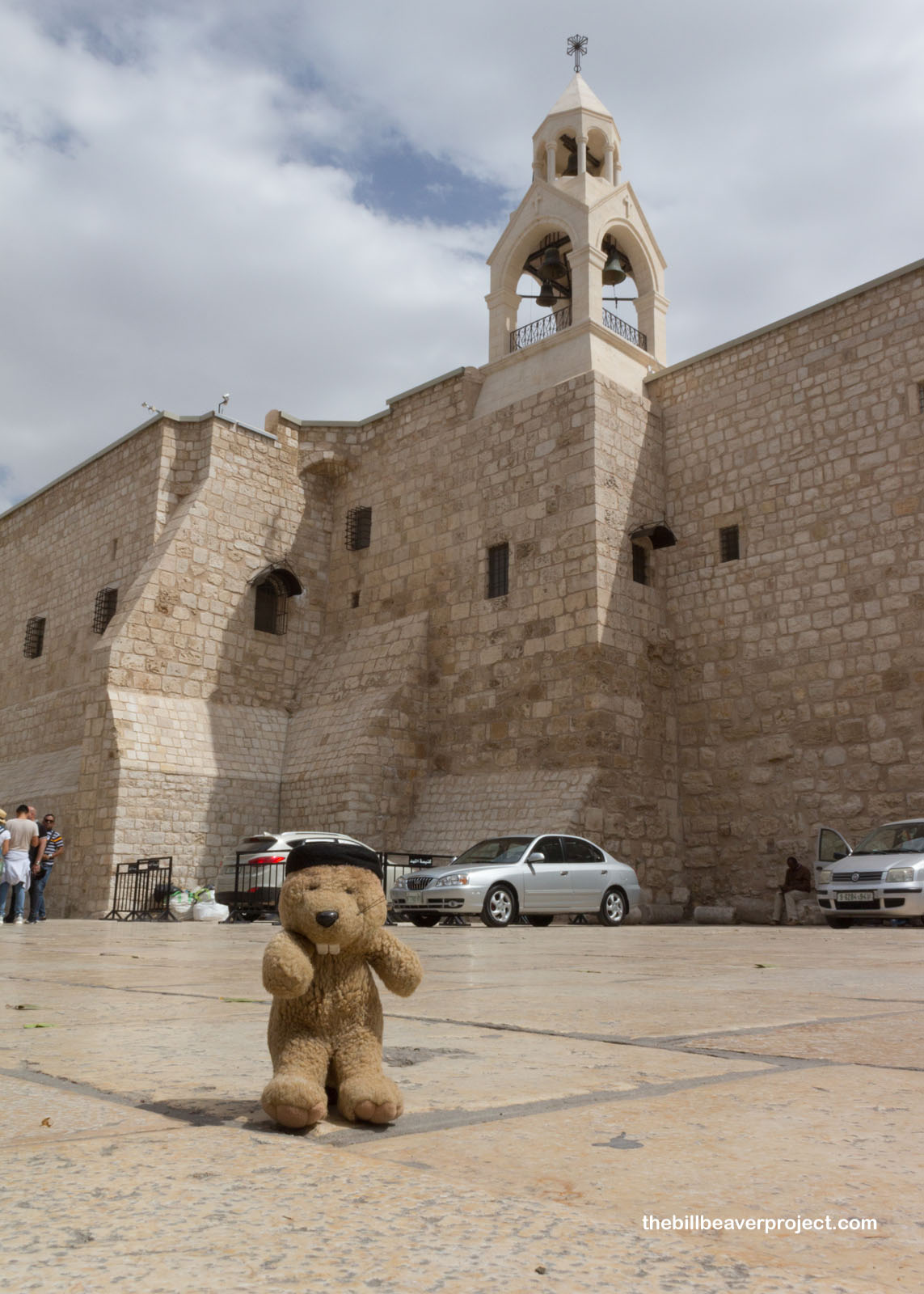 |
The Church of the Nativity dates back to the 6th Century AD, making it the world’s oldest complete Christian church! Originally, the Romans had built a temple to Adonis over the traditional site in order to wipe out its memory, but in the 300s, the converted Emperor Constantine I tore down that temple and built his own church over it. What we see today was an expansion by the Emperor Justinian!
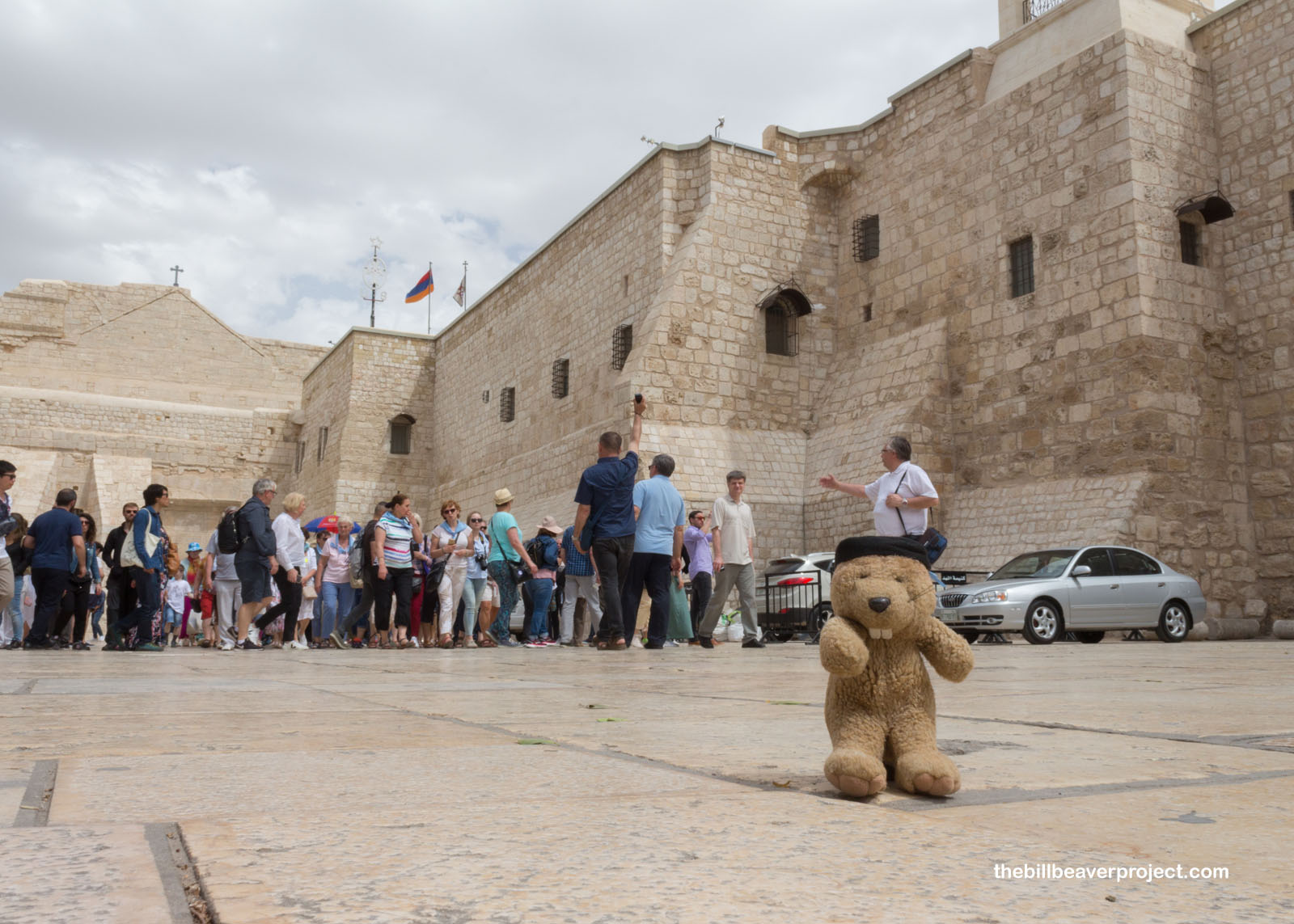 |
Fitting the Christmas tradition, the inside of the church is decorated by hundreds of colorful baubles hanging from the ceiling! Like the Church of the Holy Sepulchre, this church is divided up among the Greek Orthodox, Armenian Orthodox, and Roman Catholic Churches, and also like the other church, it contained a three-hour line to visit the cave where folks pray in front of a silver manger!
Our guide decided to skip that line, which was about to close for the day anyway, and take us to the nearby Chapel of St. Catherine, which has a secret opening time. When the doors opened, we descended, not into the manger cave but the dark and dusty cell where St. Jerome spent thirty years of his life translating most of the Bible from Hebrew, Aramaic, and Greek into Latin. While here, our guide sang us a rendition of the Pater Noster in Aramaic!
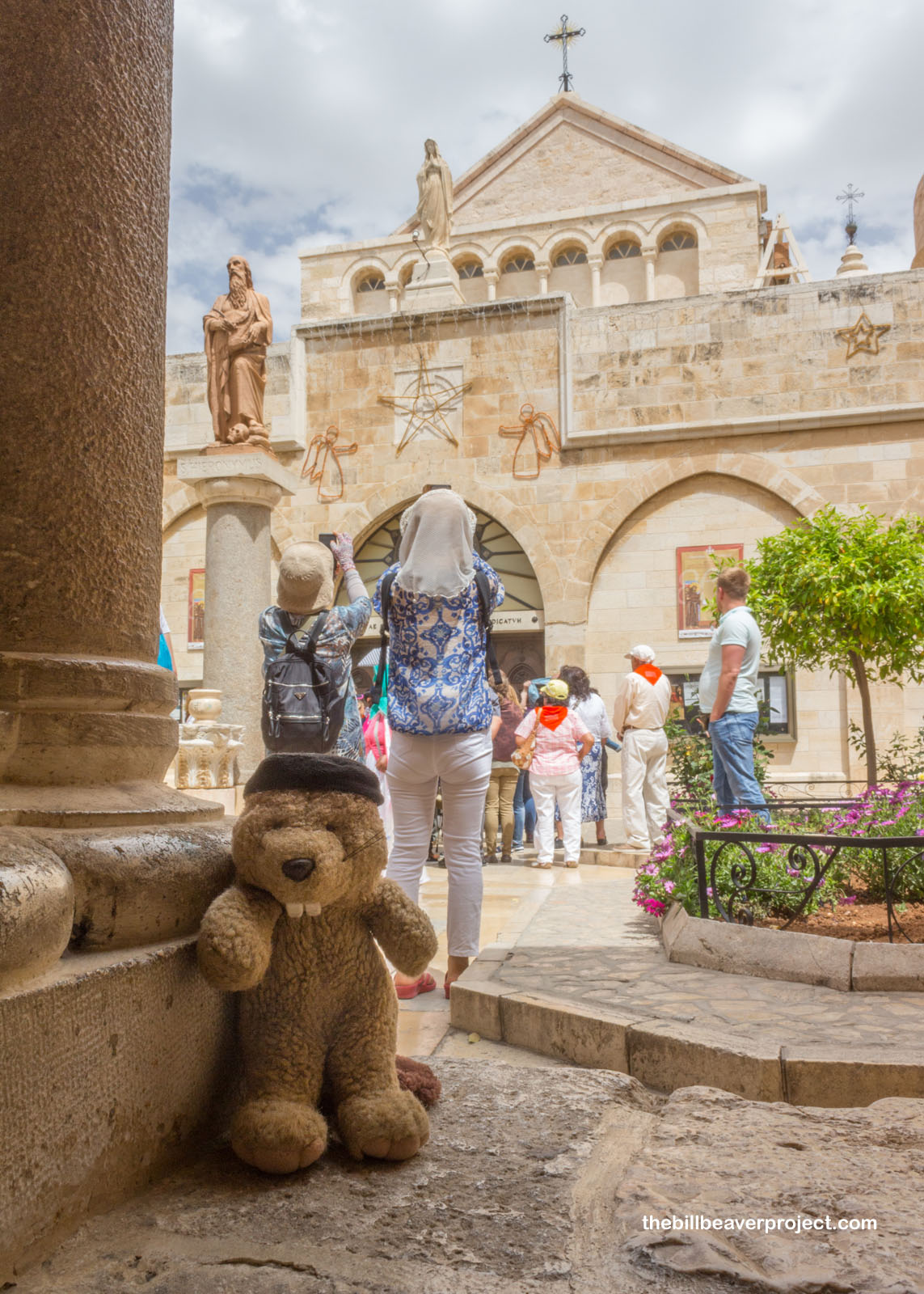 |
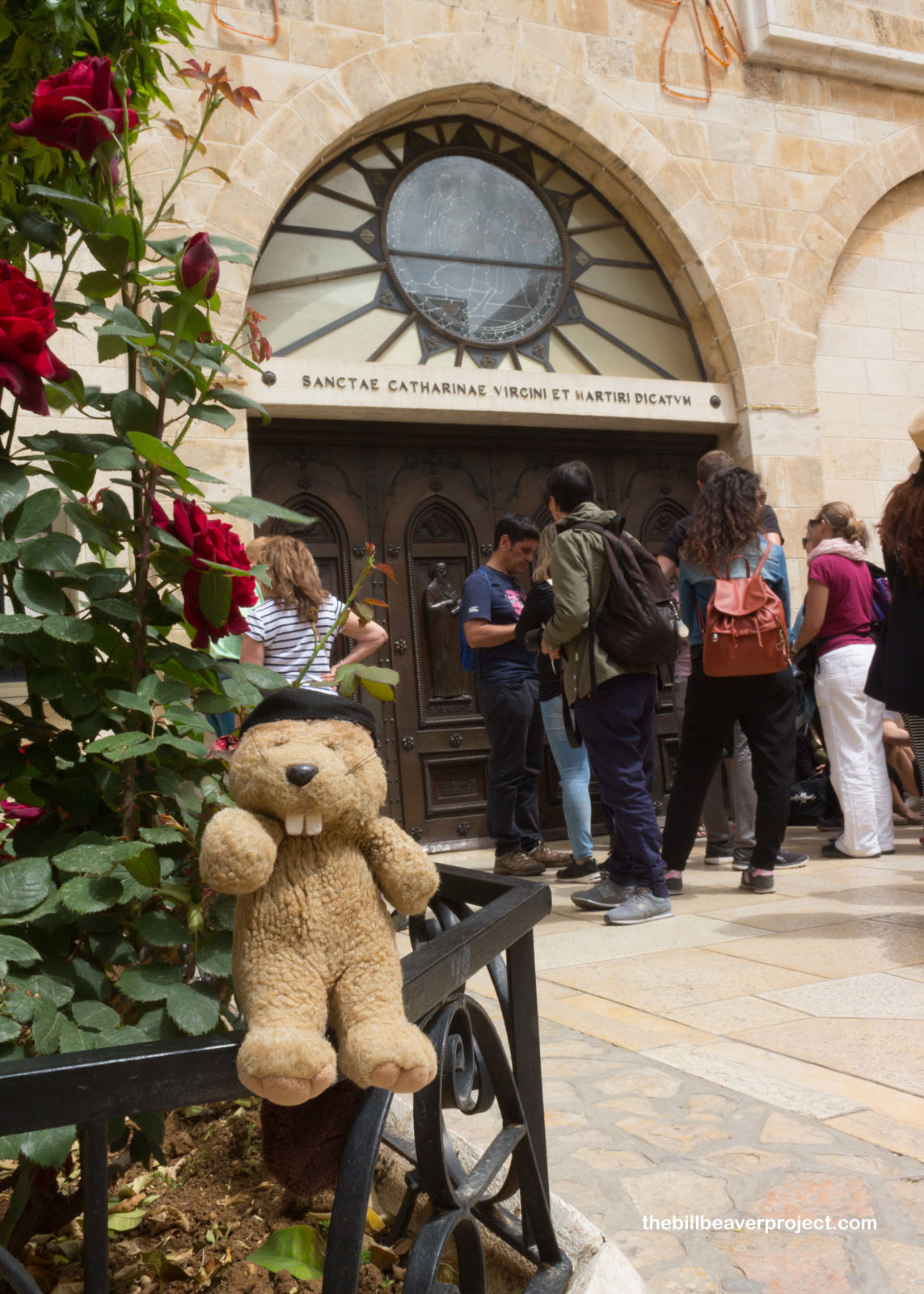 |
With our tour of the West Bank wrapping up, we had to pay a visit to a much more recent, and much more divisive, wall in the West Bank: the barrier separating it from Israel.
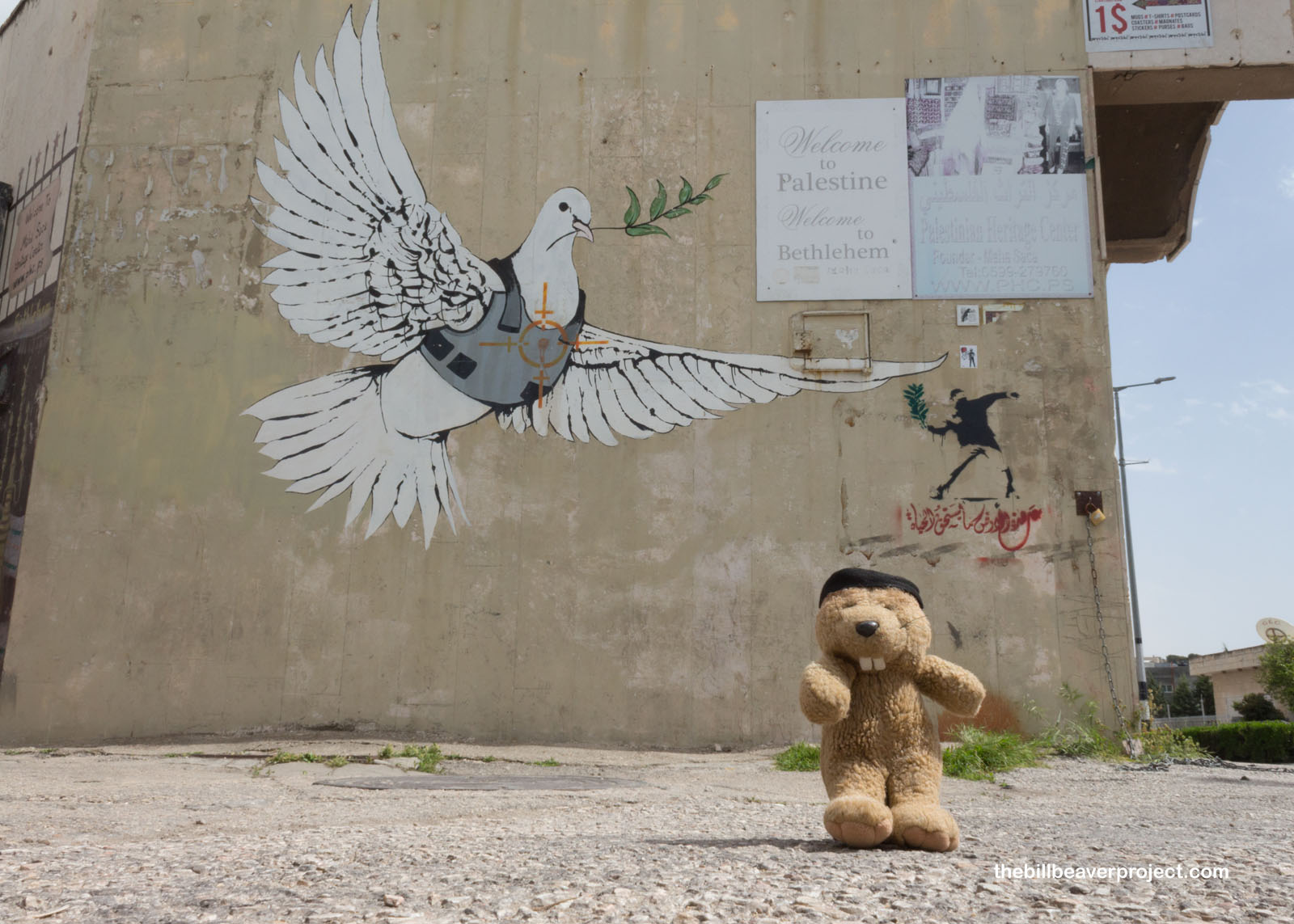 |
This wall has been here since September 2000 following an uprising called the Second Intifada. It’s 440 miles long, running along the Green Line, laid out in the 1949 Armistice Agreements with Egypt, Jordan, Lebanon, and Syria! The Israeli government says the wall is necessary to protect Israel from terrorism, but to the folks in the West Bank, it’s inhumane! For instance, Karim told us, because of this wall, if someone living in the West Bank wanted to visit a relative living in Gaza, they couldn’t drive the 50 or so miles to visit. Instead, they’d have to to drive to Amman, fly to Egypt, and cross into Gaza from there! Even to get medical treatments in Israel requires an extensive permitting process!
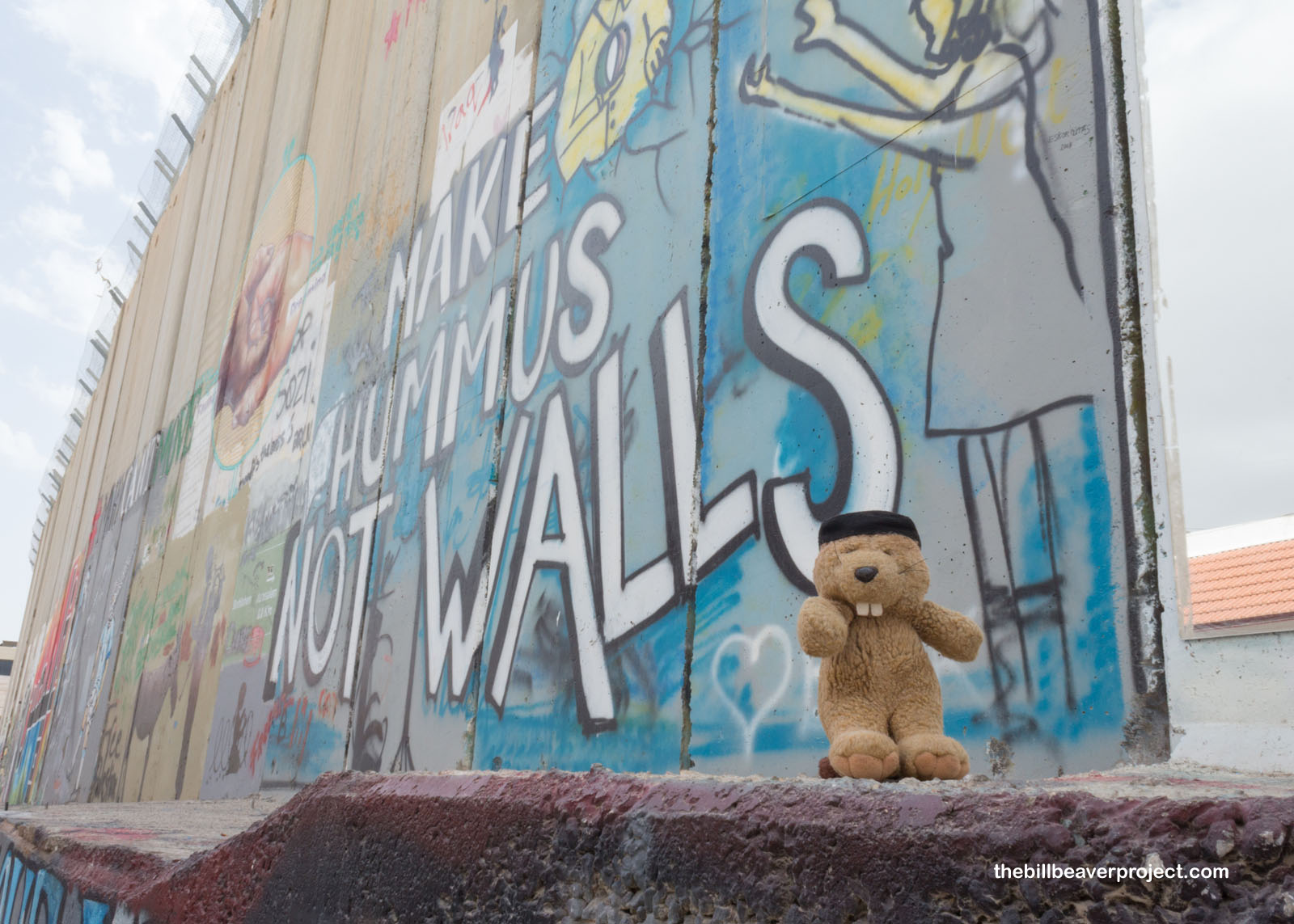 |
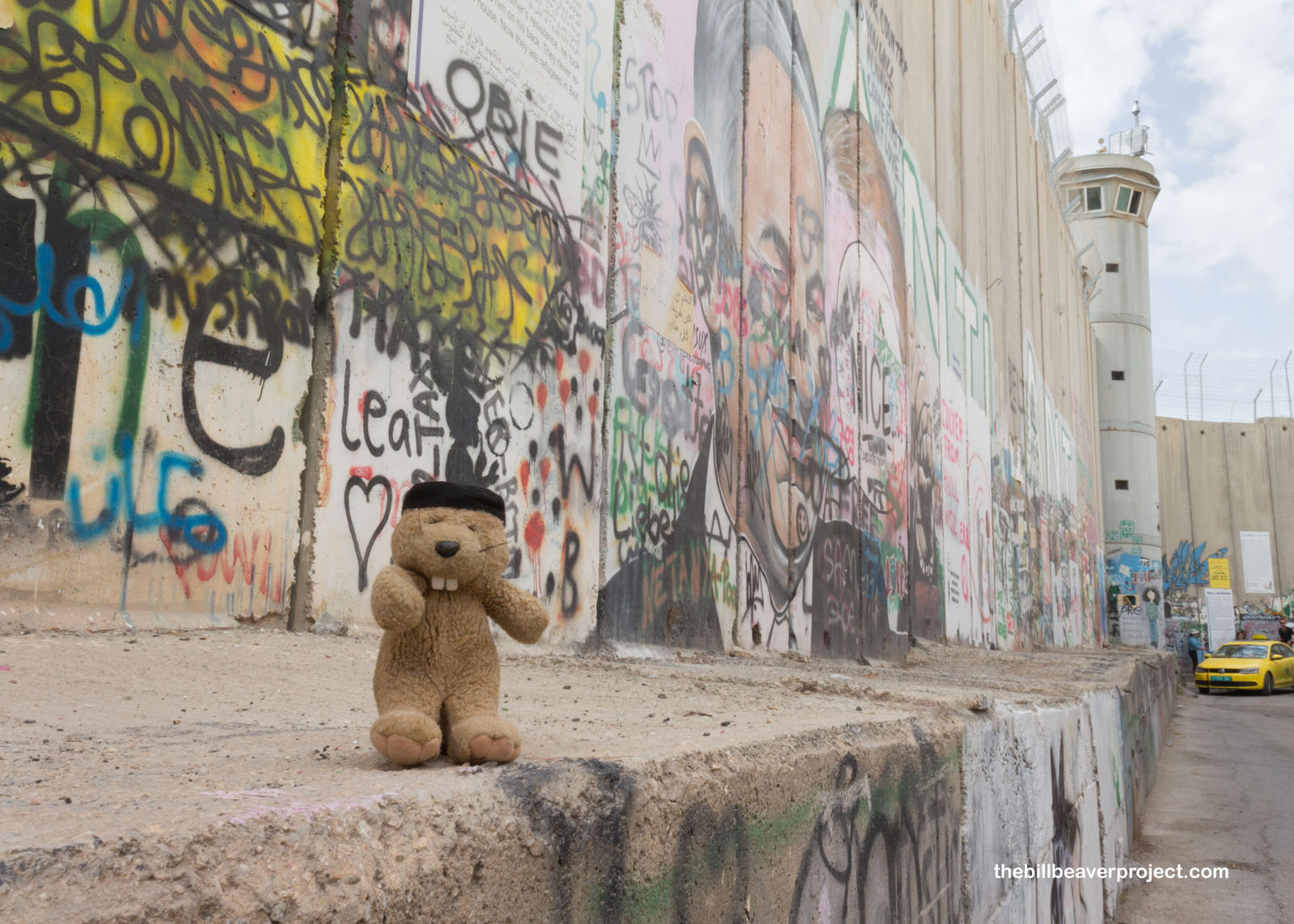 |
A lot of these frustrations now cover the base of the wall along Hebron Street here in Bethlehem. This stretch has become a very famous canvas of art, made so by the contributions of the artist, Banksy, who has combined traditional images of peace, like doves, cherubs, and even Dorothy from The Wizard of Oz with violent motifs from the Israel-Palestine conflict! In Banksy’s wake, countless other artists have descended upon this wall with messages of peace, of provocation, of questions. In fact, there’s even a shop here that helps visitors make their own stencils and spray-paint their messages onto this international canvas! The process is described as not not legal!
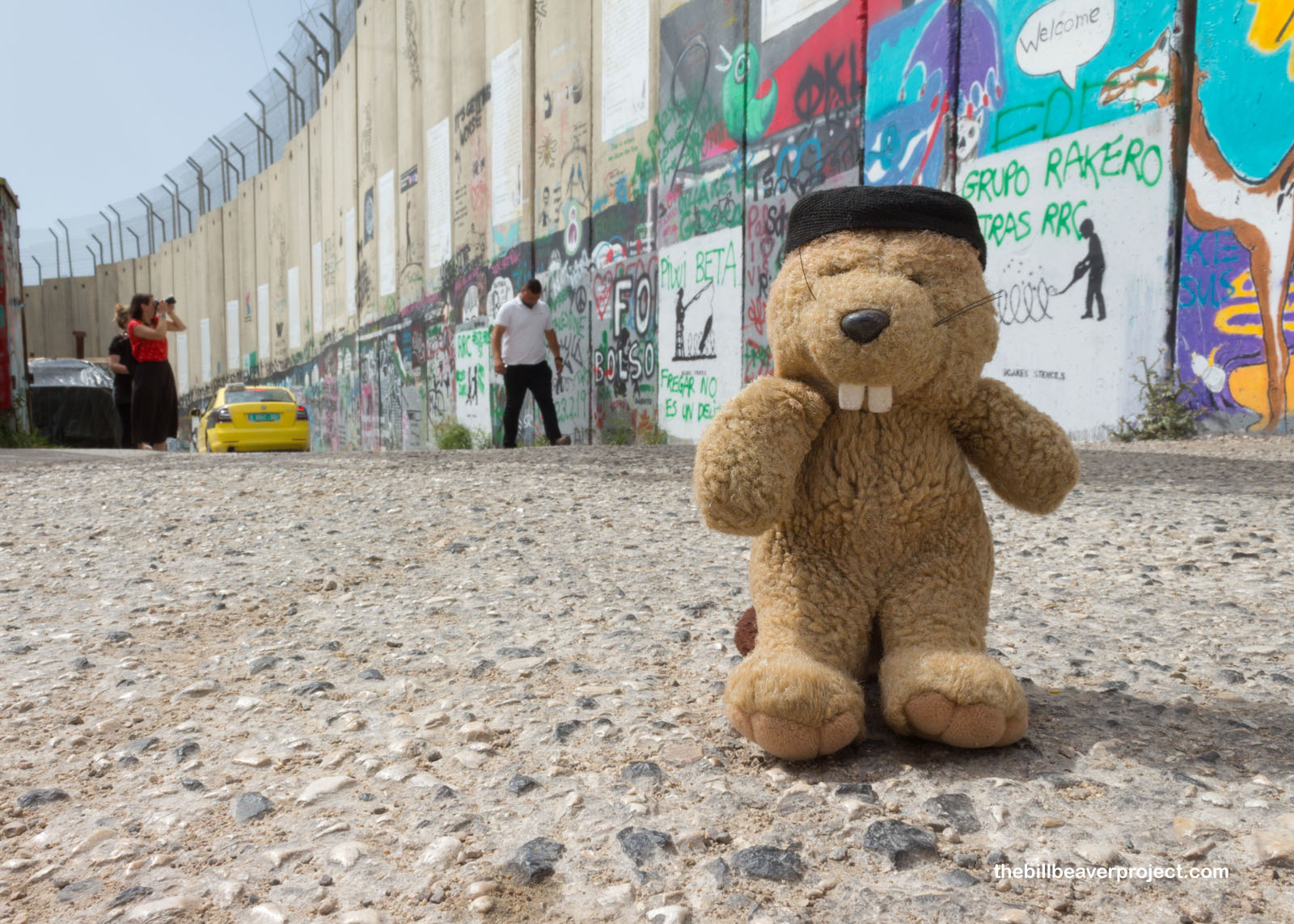 |
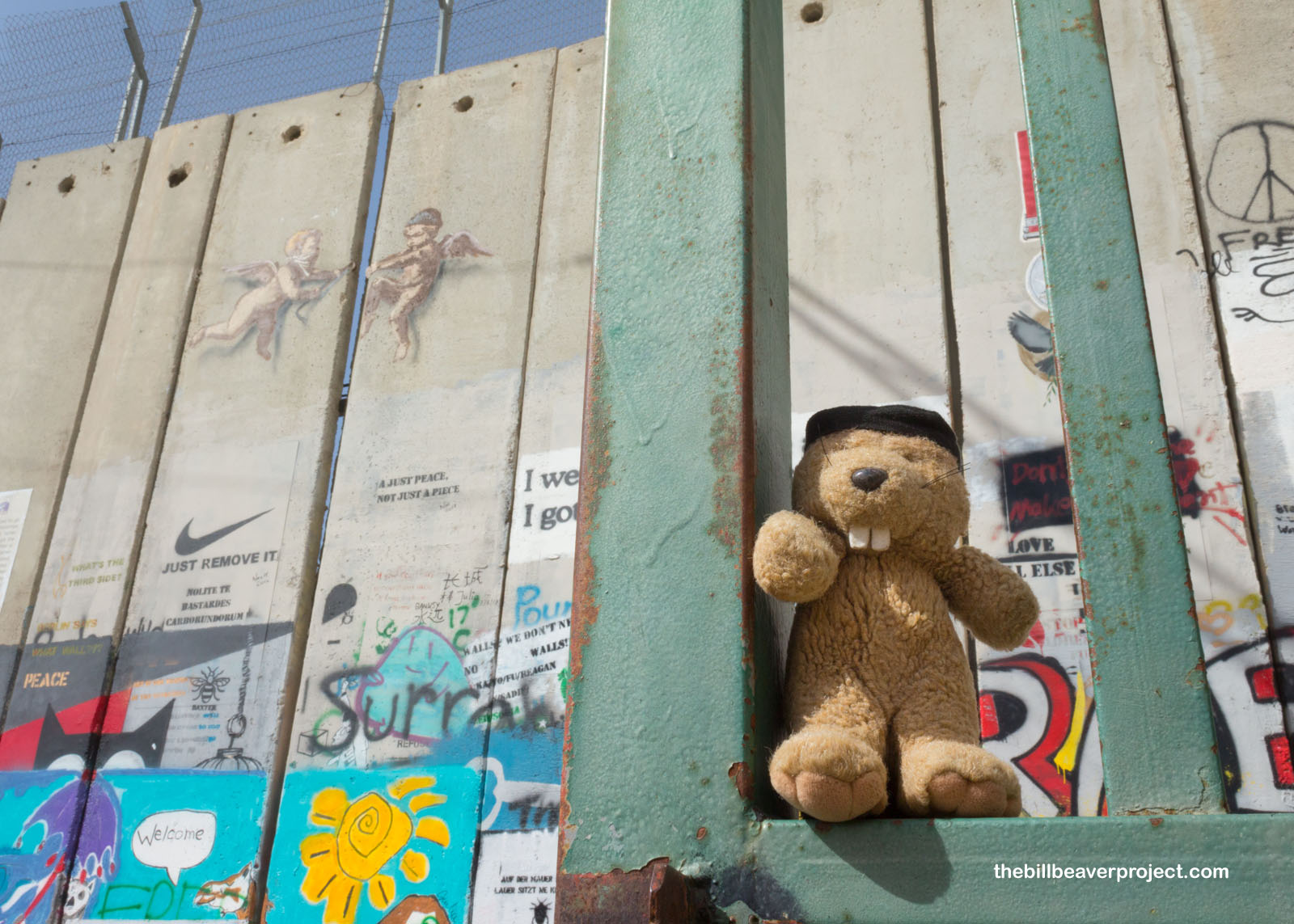 |
Punctuating this stretch of wall is another famous Banksy installation, the Walled Off Hotel, which contains a museum of the conflict and a rotating schedule of famous musician performances. It’s decorated with old military surplus supplies and more famous works by the artist, like a pillow fight between Israeli and Palestinian soldiers! Folks can stay in the rooms here, which promote the “worst view in the world!”
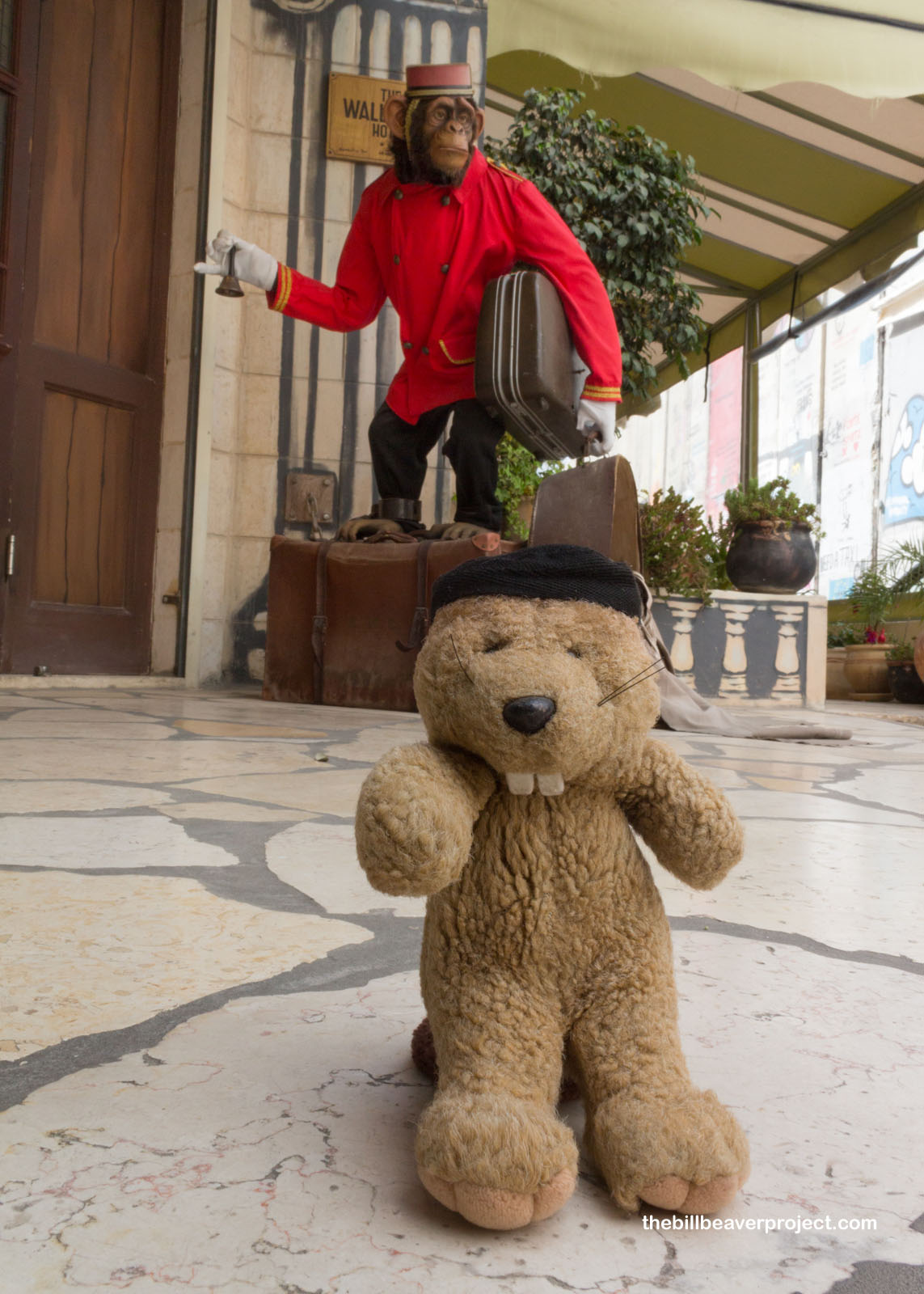 |
Like most tours, this one wrapped up all too quickly. As we dropped off Karim and headed back into Jerusalem, past the armed checkpoints, I had lots to think about. My passport has offered me so much freedom of movement and access to amazing places over the years. It’s never been the risk to my safety that it is for so many folks living at this border, and it’s a shame that so many are cut off from experiencing their heritage in the way that they deserve. As folks back in my home country talk about making their own wall, I worry about what it will mean for folks on either side. Maybe, like the walls in China or Berlin, they’ll become obsolete one day!
Lehitra’ot!

 Previous Day |
Total Ground Covered: 569.0 mi (915.7 km) |
 Next Day |
